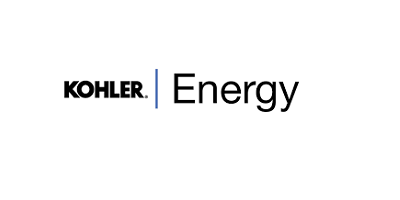Backup power systems such as generators are crucial in keeping healthcare facilities running following outages caused by extreme weather. But all electrical systems designs and installations must meet a significant number of codes and regulations, says Brady Eifrid, Senior Project Engineer at Kohler Power Systems
Extreme weather events, including hurricanes, heatwaves, earthquakes, floods and powerful storms, can wreak havoc on power networks, leading to significant outages with little to no warning. In an age of climate uncertainty, these disruptive incidents are becoming increasingly frequent and severe.
Research by Climate Central, an independent group of scientists and researchers, shows that 80% of all major U.S. power outages reported from 2000 to 2023 (1,755 incidents) were due to weather. The study also reveals that weather-related power outages are on the rise, with the U.S. experiencing about twice as many weather-related outages during the last ten years (2014-2023) than during the first ten years analyzed (2000-2009).
These incidents were recorded across the U.S., with the highest prevalence in Texas, Michigan, California, North Carolina, and Ohio. Climate Central says the nation’s electrical grid was not built for the present-day demand, with above-ground transformers, transmission wires, and utility poles all susceptible to damage from extreme weather events.
For healthcare facilities in particular, these power outages can be disruptive at best and potentially life-threatening at worst. They can lead to a loss of lighting for surgical procedures, the failure of critical equipment such as respiratory devices, and the loss of heating, ventilation, air conditioning and IT/computer systems. Each outcome can have a dramatic effect on patient comfort, care, and life.
Power system requirements for healthcare facilities
Given the impact of bad weather and grid outages on healthcare facilities, reliable backup from on-site mission-critical generators is a crucial requirement. Generators represent a tried and trusted solution that can be brought online almost immediately in the event of grid failure. The latest design, KOHLER KD Series, is compatible with hydrotreated vegetable oil (HVO), a renewable fuel made from waste products and residues including vegetable oils and animal fats. The use of HVO reduces carbon emissions by as much as 90% across the lifecycle, making generators a sustainable as well as reliable option for backup power.
However, in highly regulated sectors such as the healthcare industry, an extraordinary amount of detail and complexity goes into the design, inspection, and installation of power systems such as generators, automatic transfer switches, controls and paralleling switchgear. Equally challenging is ensuring that these designs and installations meet a significant number of codes and regulations. So, let us look at some of the key considerations healthcare facilities need to make to ensure their generators keep the power on during outages, while assessing some of the challenges generator manufacturers face to meet regulatory standards.
Highlighting relevant standards and codes
Some of the more commonly known requirements fall within the scope of the National Fire Protection Agency (NFPA). In particular, there are three specific NFPA standards – NFPA 99, NFPA 110, and NFPA 70 – that must be considered:
• NFPA 99 – Health Care Facilities Code
• NFPA 70 – National Electrical Code (NEC)
• NFPA 110 – Standard for Emergency and Standby Power Systems
It is worth breaking down each of the three NFPA standards most referenced within healthcare installations. These codes reference one another heavily while sticking within their respective area and adoption of the most recent code varies by state. Because there are many similarities between the standards, the goal is to highlight each standard’s specific scope and applications individually and summarize the references between them. Ultimately, the standards are designed to collectively ensure that healthcare facilities have robust, reliable power systems to support critical operations and ensure patient safety during power outages.
NFPA 99 – Health Care Facilities Code
NFPA 99 is a comprehensive code that outlines various safety standards for healthcare facilities, including electrical systems, plumbing, gas, and emergency preparedness. Within this code, Chapter 6 explicitly addresses electrical systems, categorizing them into four risk levels based on the potential impact of system failures on patient care, ranging from significant injuries or death (Category 1) to no effect on patient care (Category 4). The code mandates the use of Essential Electrical Systems (EES), which are critical for life safety, such as those powering surgery and intensive care units. These systems must have independent power sources, typically a combination of utility power and backup generators, to ensure continuous operation during power outages.
NFPA 70 – National Electrical Code
NFPA 70, also known as the National Electrical Code (NEC), sets the benchmark for safe electrical design, installation, and inspection to protect people and property from electrical hazards. In healthcare facilities, this code is crucial for ensuring that all electrical systems, including backup and emergency power systems, are installed correctly and safely. Article 517 of the NEC specifically addresses healthcare facilities, providing detailed requirements for essential electrical systems, including the use of energy storage solutions and microgrids. It ensures that optional loads do not overload generators and mandates that these loads are managed to prevent any power supply issues.
NFPA 110 Standard for Emergency and Standby Power Systems
NFPA 110 focuses on the performance of emergency and standby power systems, which are crucial for maintaining power during outages. This standard categorizes systems based on the maximum time they can take to supply power (Type), the duration they must operate (Class), and the level of life dependency (Level). For example, a Type 10 system must provide power within 10 seconds, and a Class X system must run for a specified number of hours. In healthcare settings, NFPA 110 ensures that backup power systems are reliable and can support life-saving equipment and critical operations. It includes stringent requirements for testing, maintenance, and installing transfer switches to ensure seamless power transitions during emergencies.
That represents an overview of three of the most common NFPA standards impacting healthcare facilities and the provision of safe and reliable power systems. Other codes and standards might be required for overall healthcare building requirements, and relevant governing bodies, including the Facilities Guidelines Institute (FGI) and the Joint Commission (JC), can provide guidance. FGI develops guidelines and best practices for designing, planning, and overall construction of hospitals, outpatient facilities, and more. The JC additionally provides standards and evaluates/inspects these types of buildings and facilities to ensure compliance with applicable standards and ensure adequate care is done safely.
Choosing power systems that meet all requirements
In summary, emergency power supply system plays a critical role in ensuring that healthcare facilities have the redundancies needed for reliable power to keep people safe and equipment stable. NFPA 99 represents a national installation guideline for healthcare facilities that refers to other NFPA installation standards, such as NFPA 70 and 110, which are used for all power system applications. It is recommended that healthcare facility operators read the codes and standards in full to assure proper installation and compliance according to the authority having jurisdiction.
It is also important that healthcare facilities partner with a reputable and knowledgeable power system provider and its authorized distributors. Kohler designs all its power systems to meet the NFPA standards, as well as local requirements including 72/96-hour sub-base tanks for diesel generators, ten seconds or less to start our generators, hurricane rated and corrosion resistant enclosures for coastal regions, and control systems that meet the NFPA 110 annunciation requirements. Kohler offers products (generator sets, paralleling switchgear, automatic transfer switches, and controls) with total system integration in mind so that everything works as expected. These factors provide power system users in the healthcare sector with the confidence to weather any storm.


















